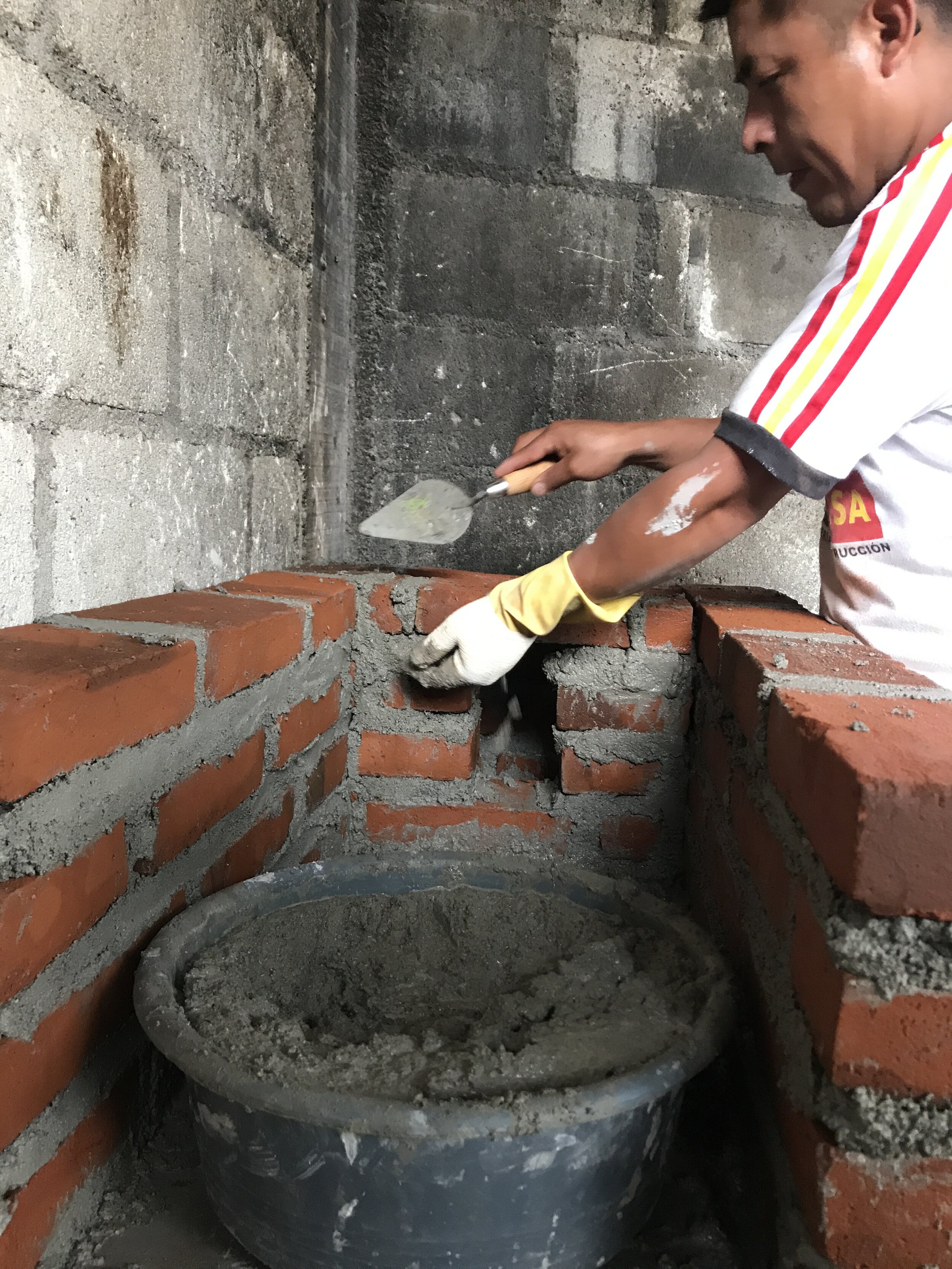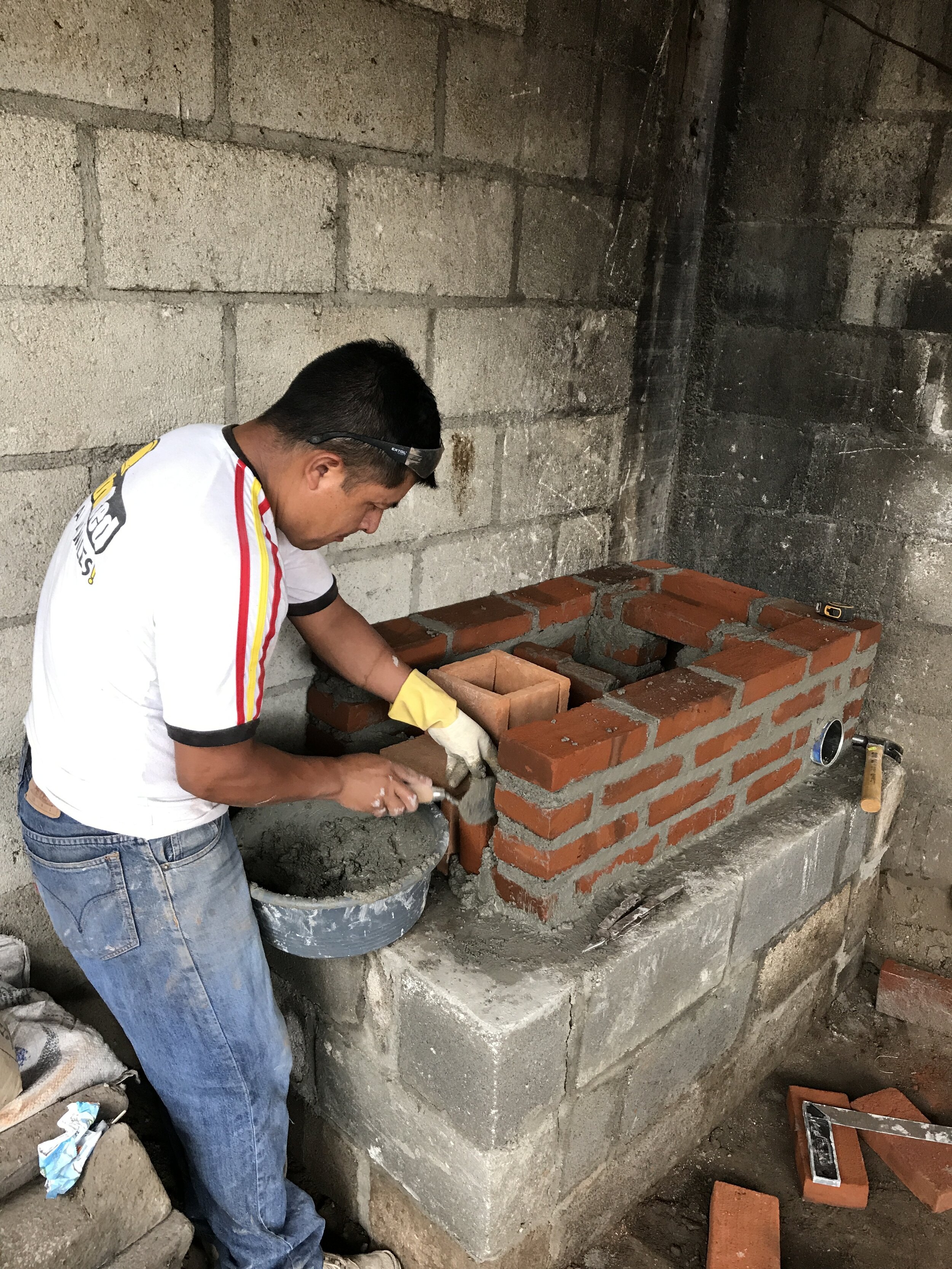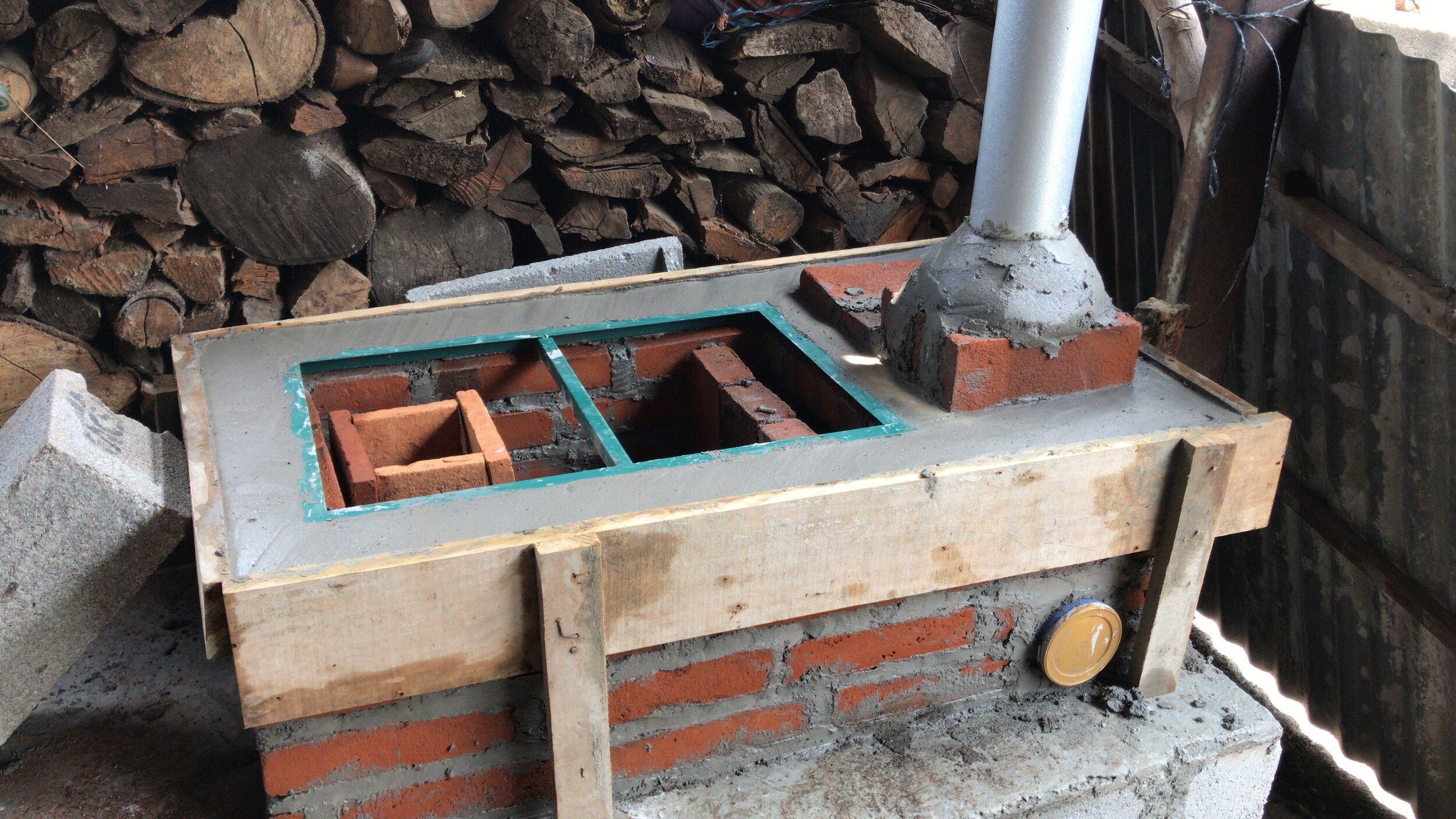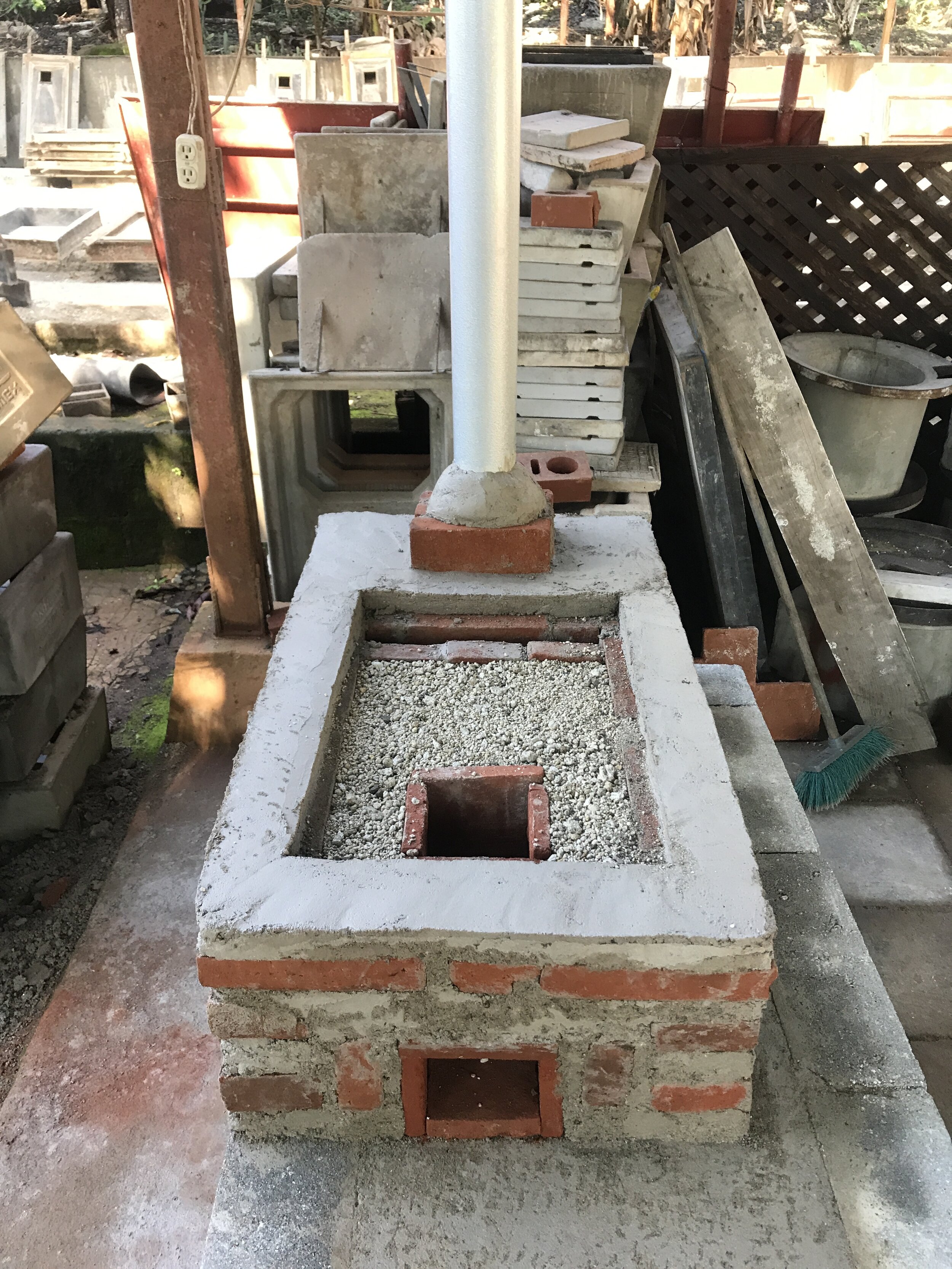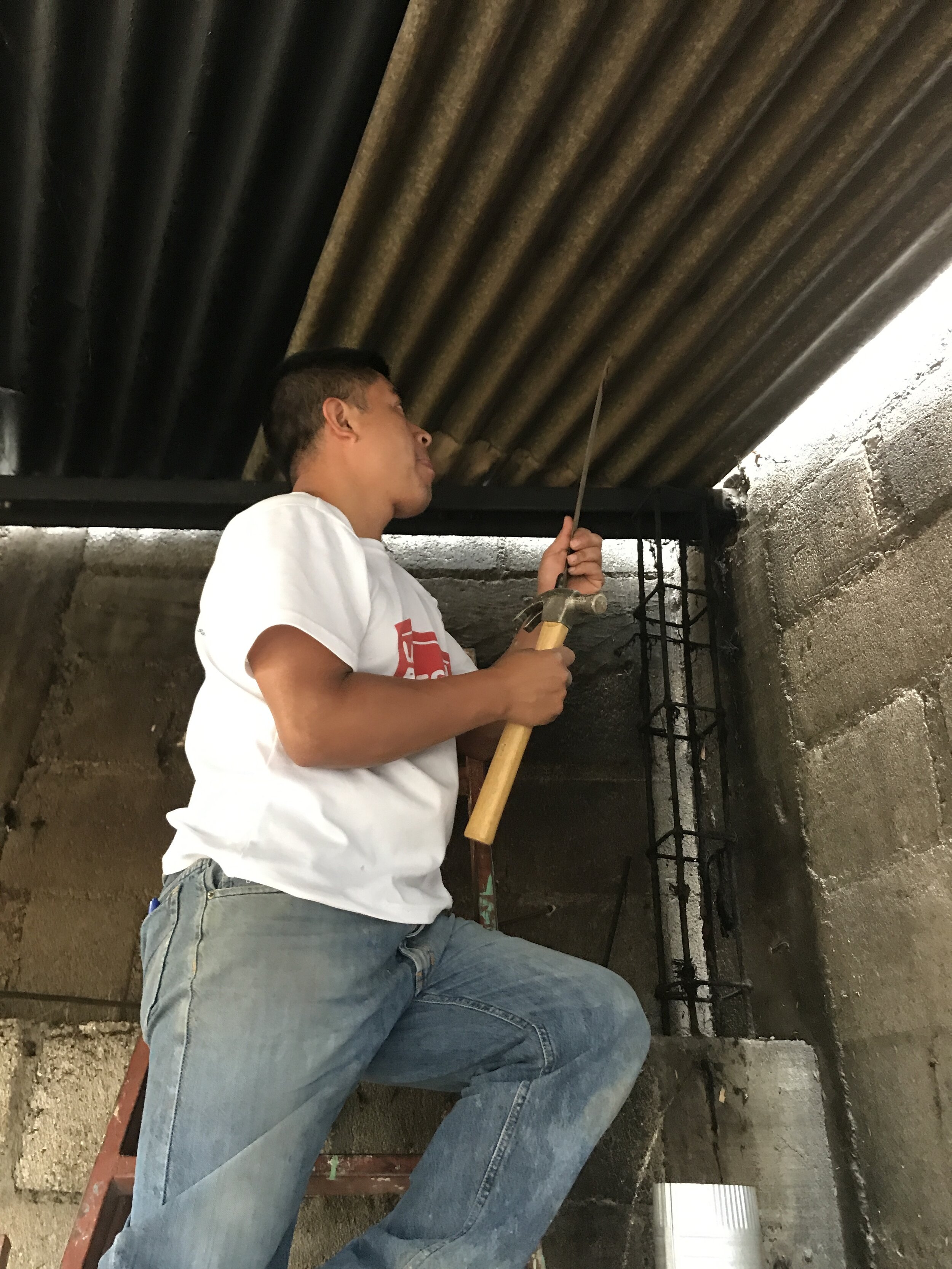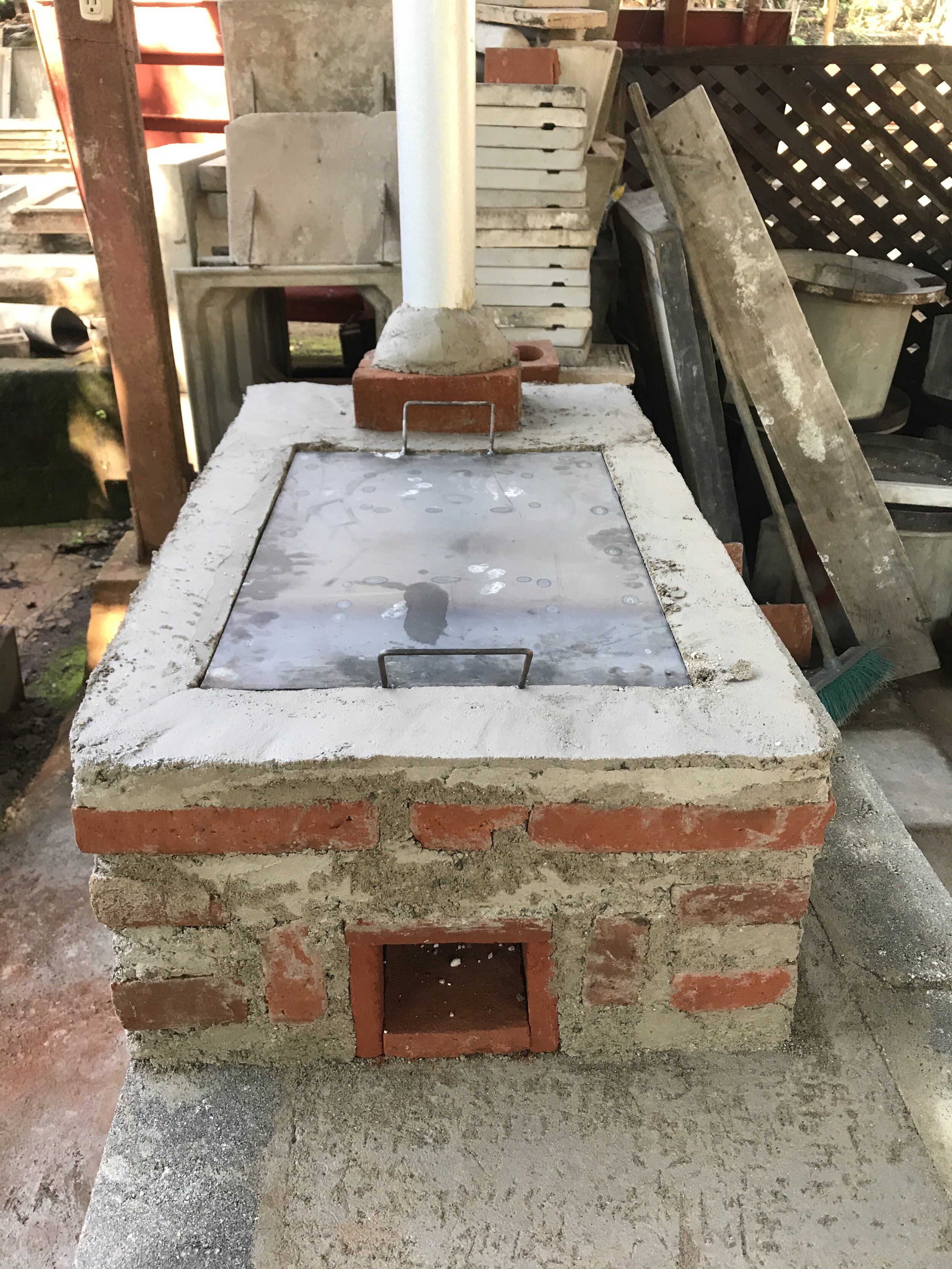Build a Justa stove in your community!
Thank you for your interest in building a demonstration Justa stove. Having a Justa stove in your community can help people gather around the cause of safe cooking. We are available to help, and we have lots of materials at the page below to help you understand what is involved. An overview of the construction process is described on the page below, and the orange links below lead to further information.
Learn about our Justa projects in Central America
Download an English translation of the Justa Construction Manual we provide to stove recipients
Download and English translation of the Justa Maintenance Manual we provide to stove recipients
Contact StoveTeam Program Director Mike Hatfield for more details
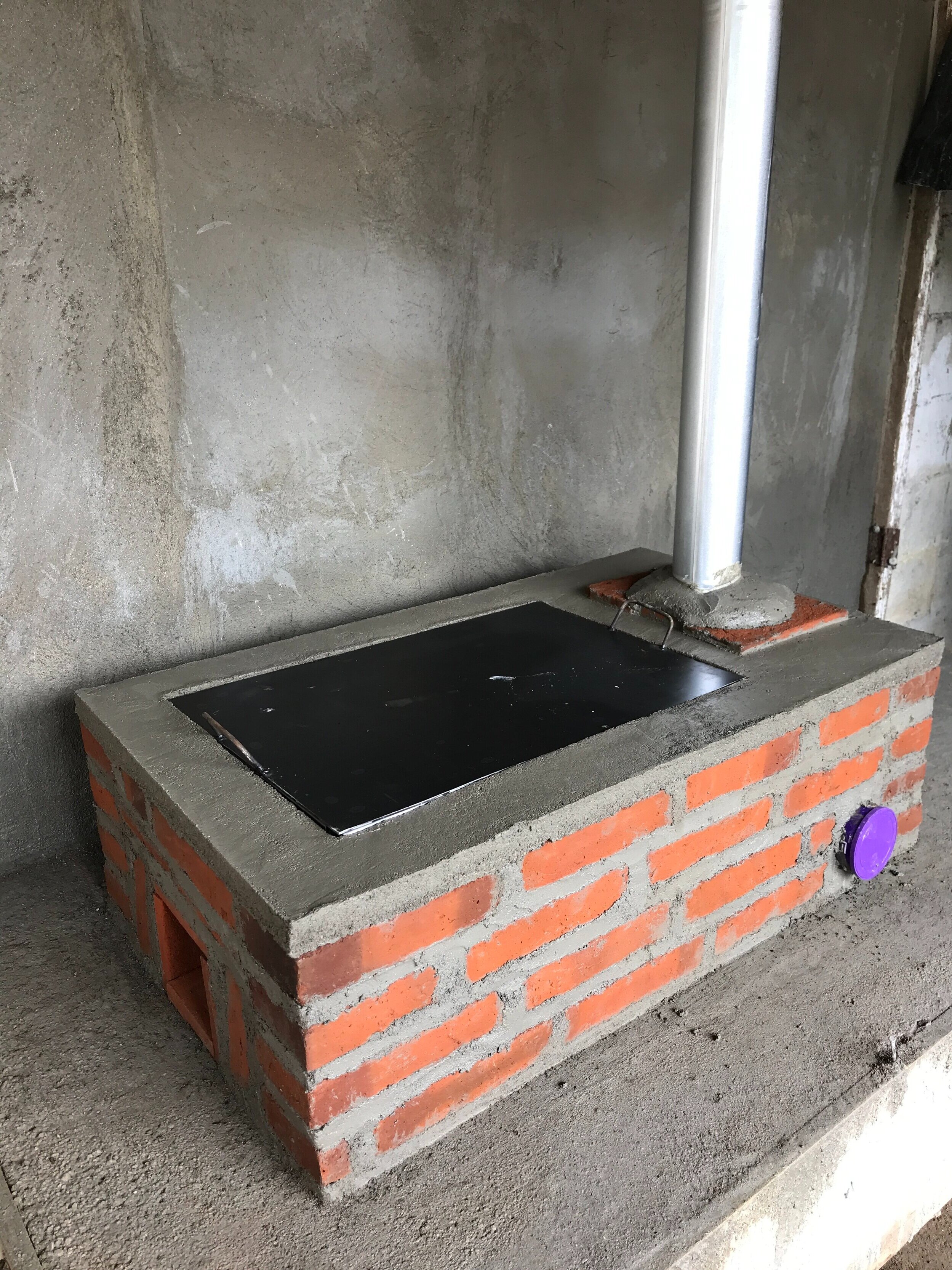
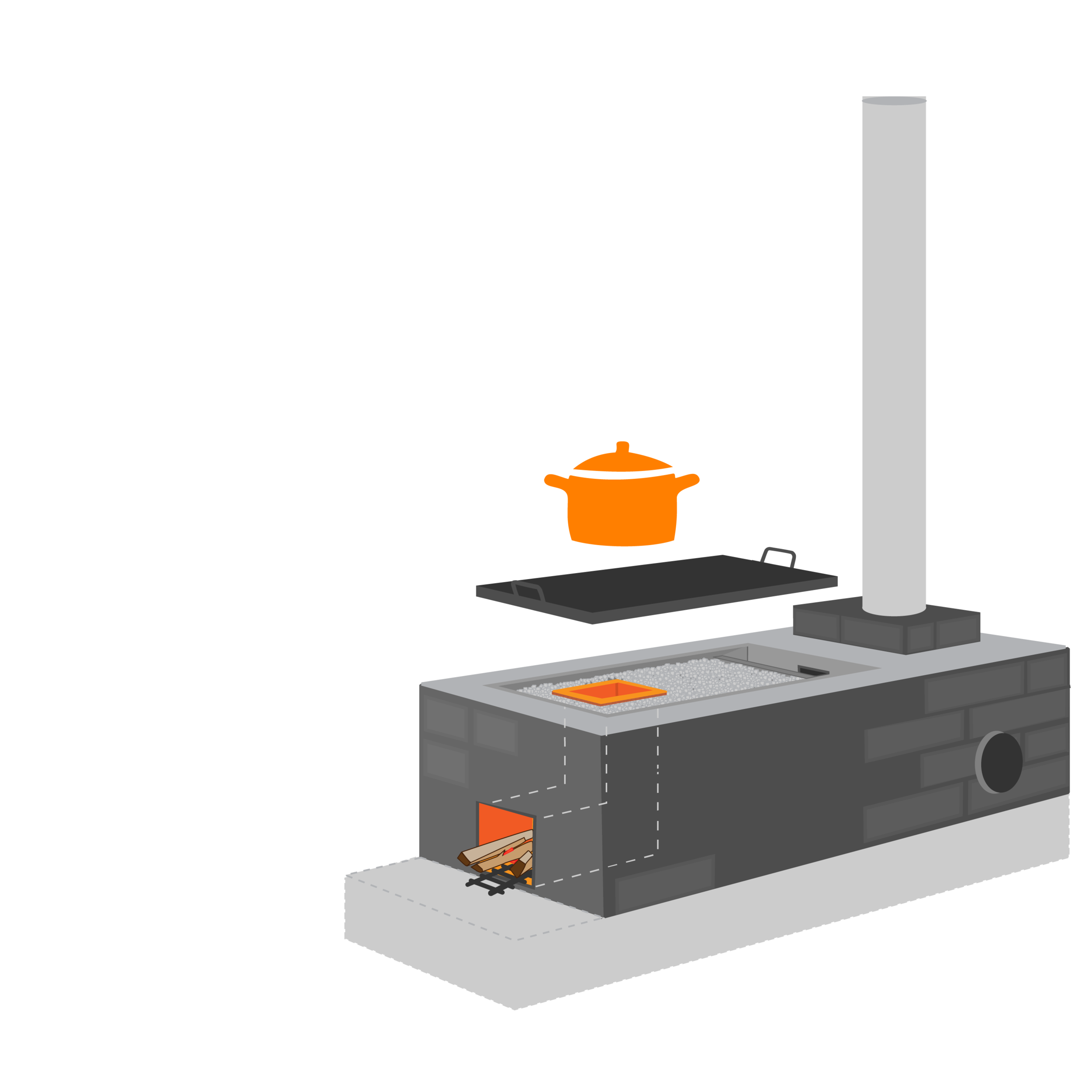
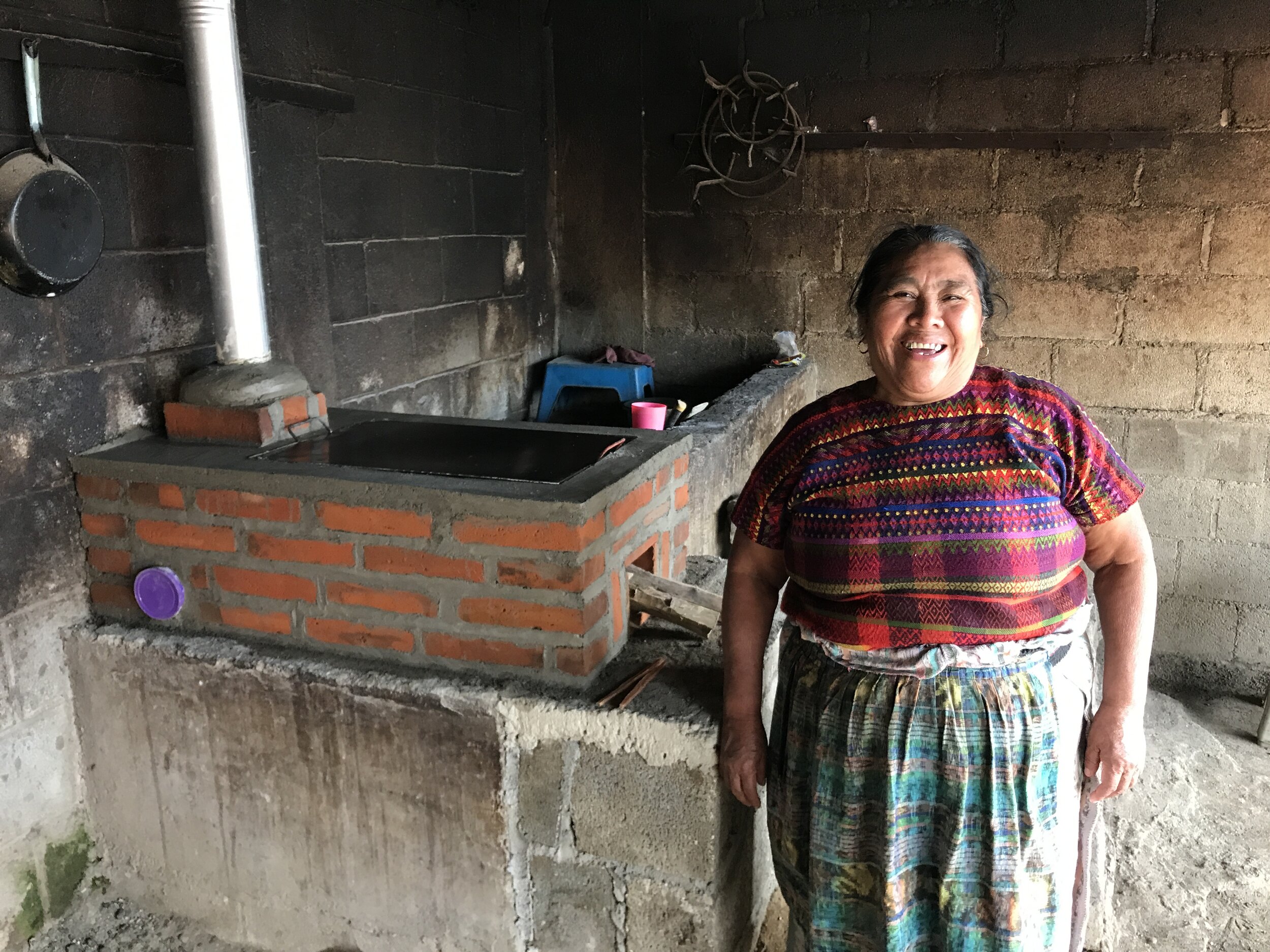
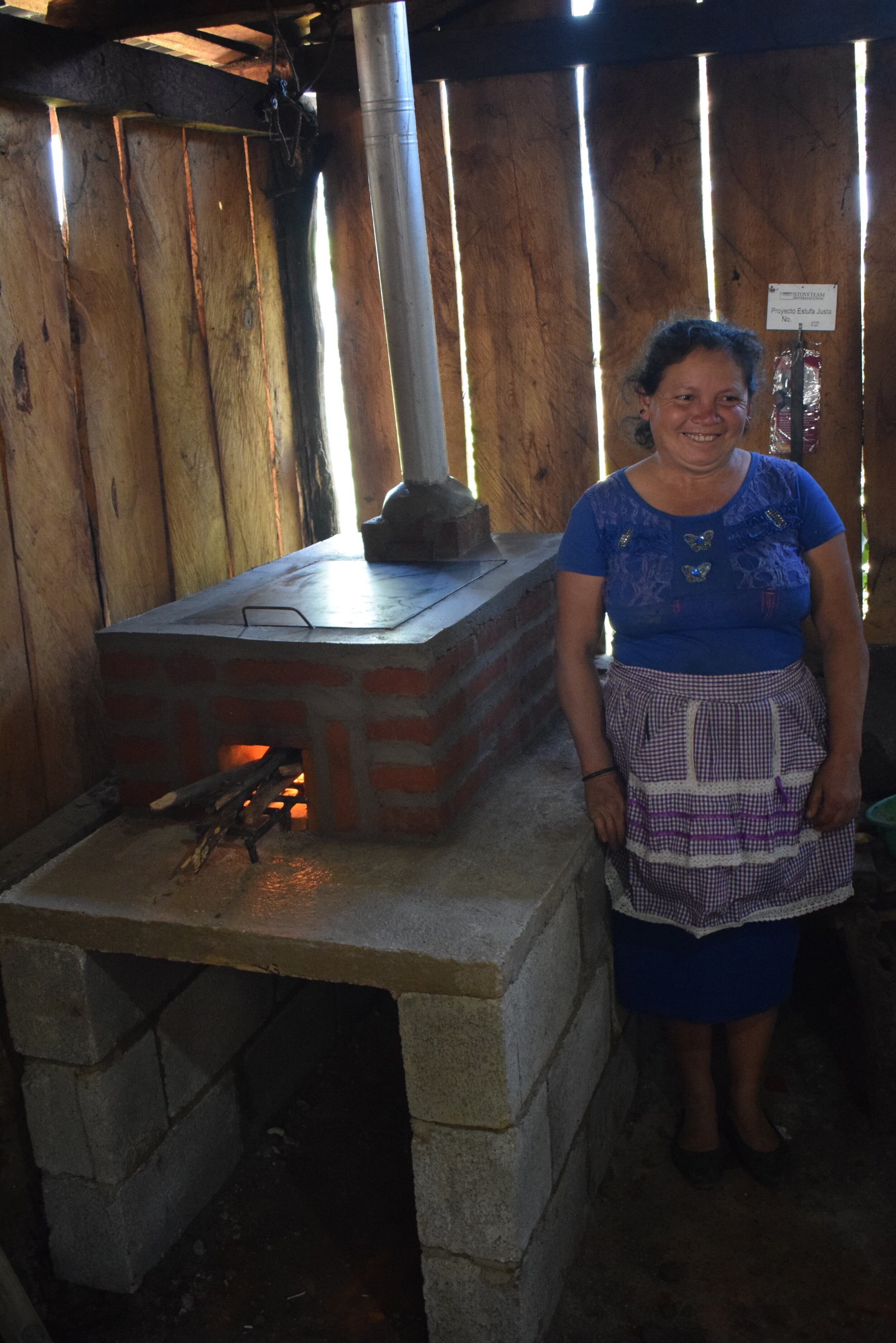
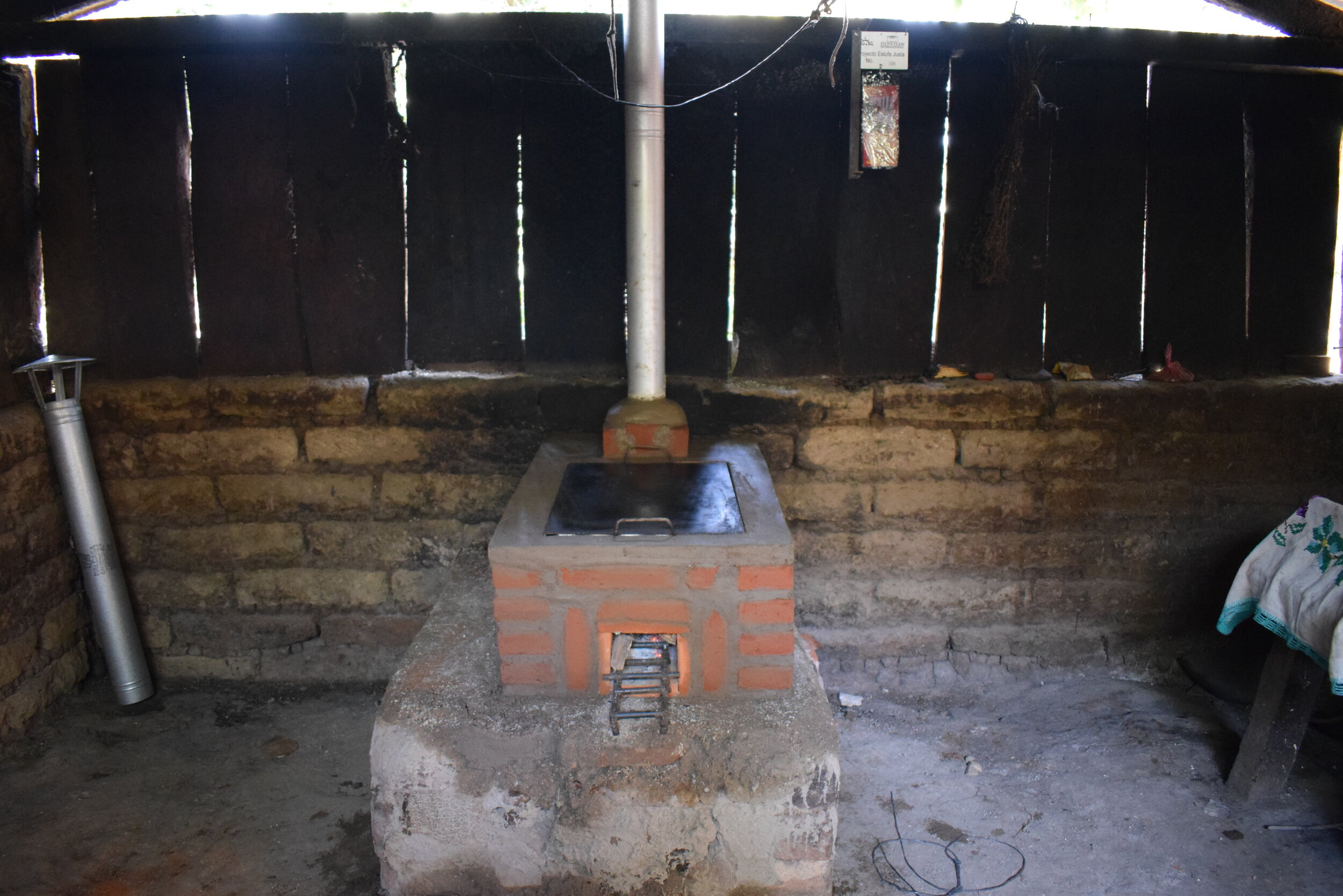



The base
The stove is built on a base that can be made from many options, but cement blocks or a preformed cement slab are probably best. The important thing is that it is about 24” high and long and wide enough to fit the stove.
The stove
The stove itself is made of bricks, sand and cement (which would be ideal to source at your location), and some specific metal and ceramic parts, that StoveTeam can provide (griddle, combustion chamber, chimney, and a few other parts). All together it is probably about $300 in materials when sourced in the USA.
Housing structure
For a housing structure, we mainly want a good rainproof roof and ideally some protection from rain coming in from the sides.
We envision this space will be used for demonstration, cooking, and education purposes. As such, it would be nice to leave ample space for a group of up to 20 individuals to be seated, on stools, on the floor, or to be able to stand comfortably around the stove with clearance on all sides if the stove were placed in the center of the room with space available for a stack of typical wood.
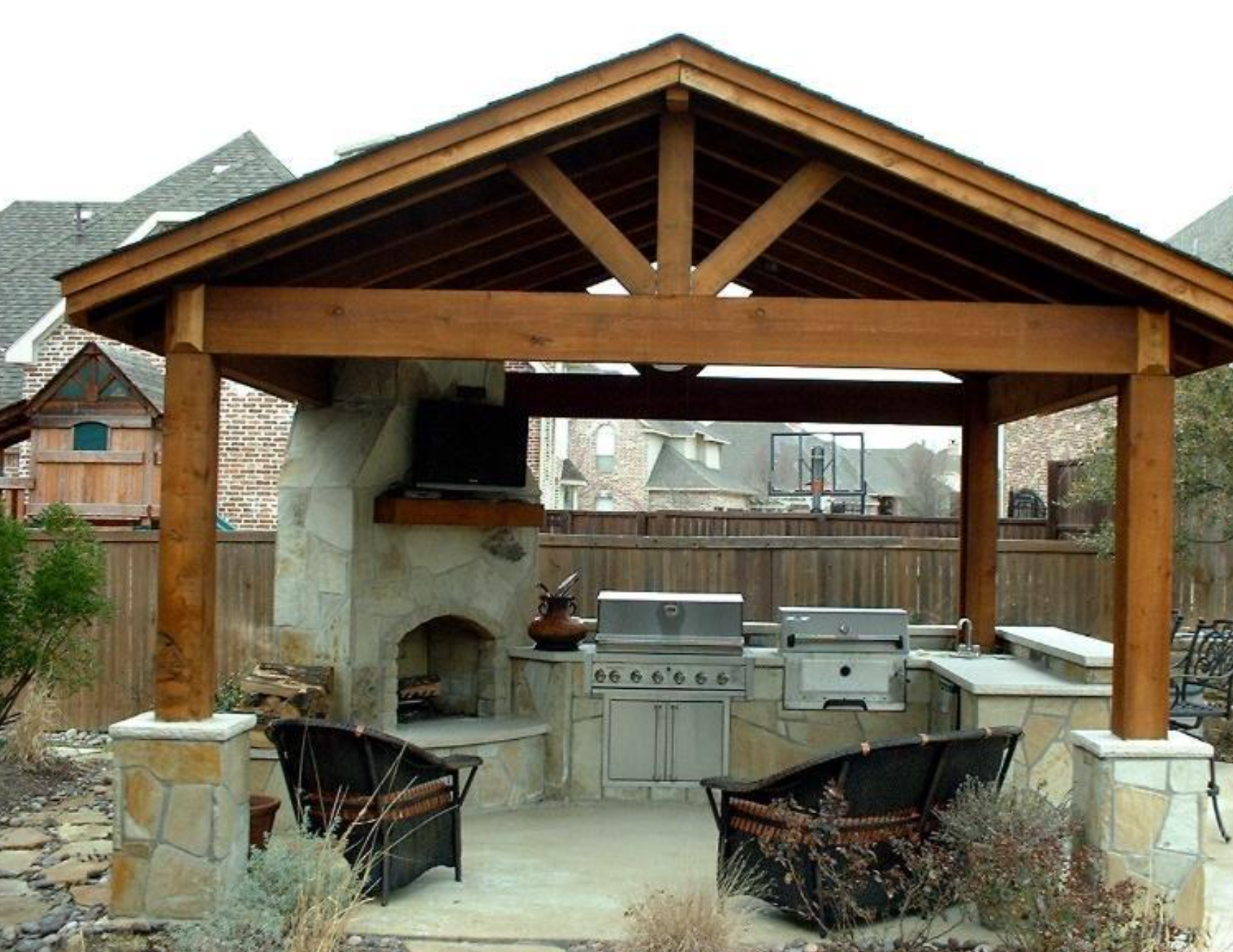
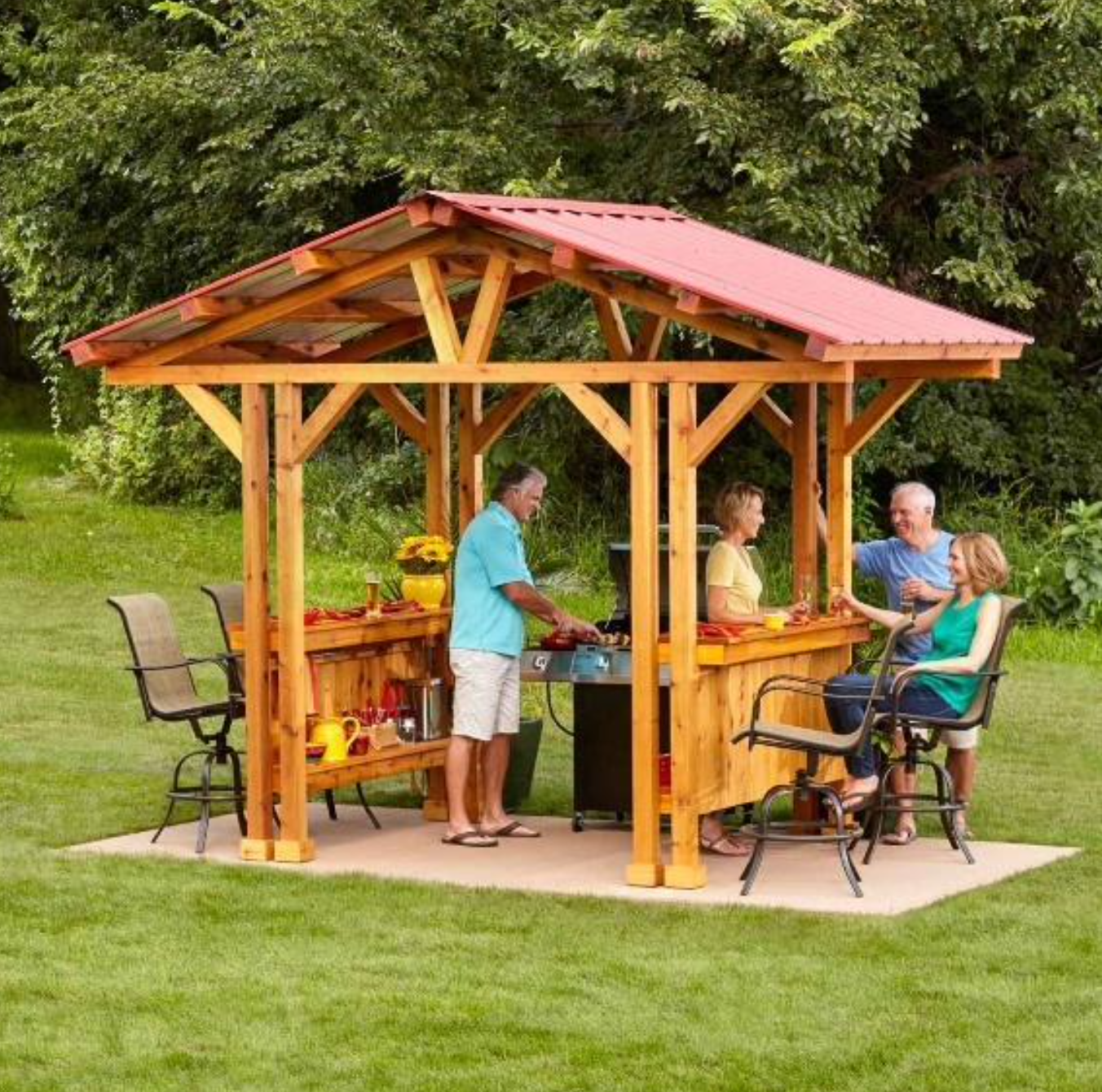
Local architecture
Here are some Guatemalan houses that are examples of local architecture. If you want to try and use similar materials as are used in Guatemala, the most common are:
Roof – Galvanized sheet metal or clay tiles.
Floor – Dirt or Cement
Walls – wood most common, sometimes cement block or galvanized metal
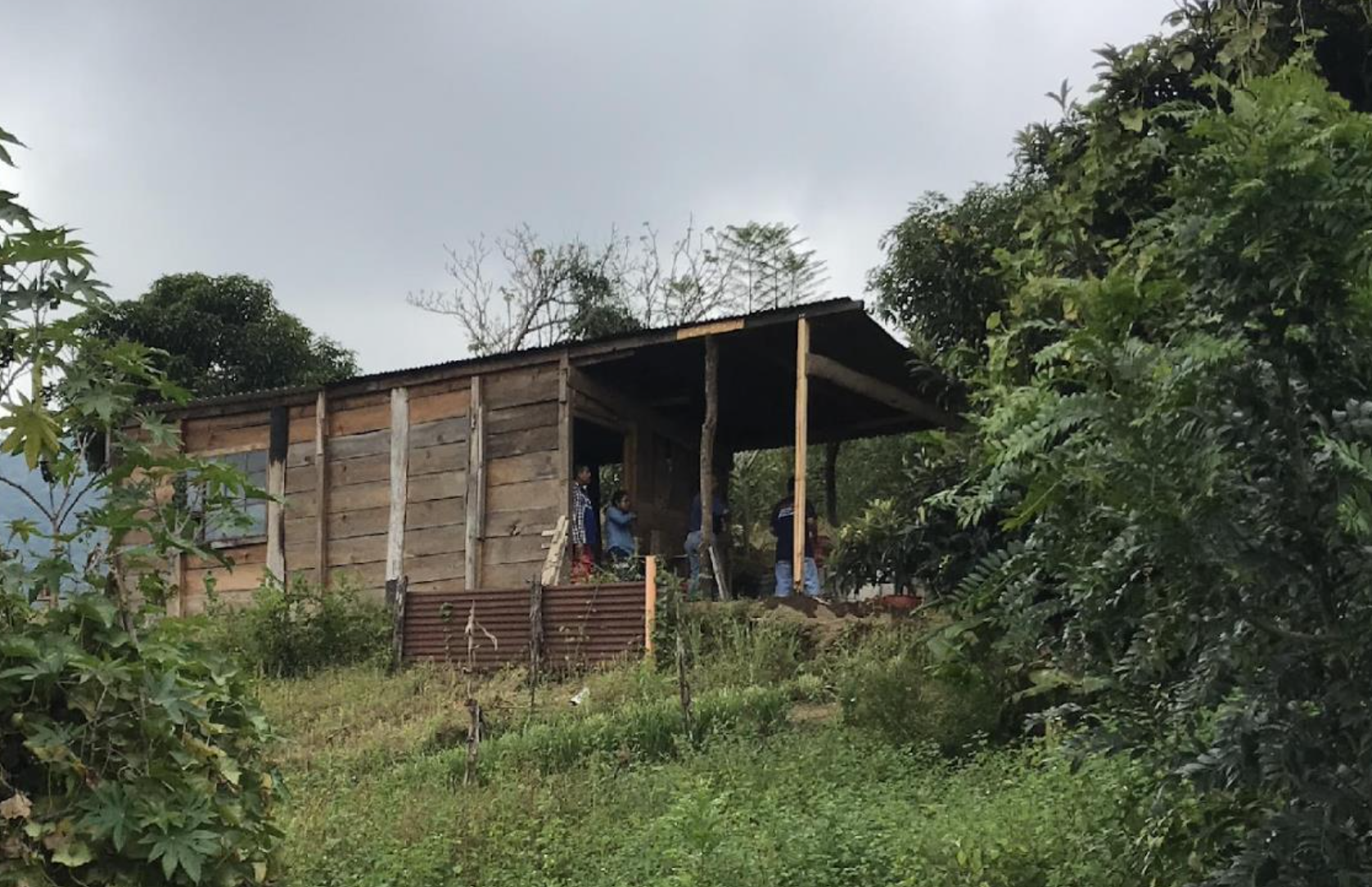
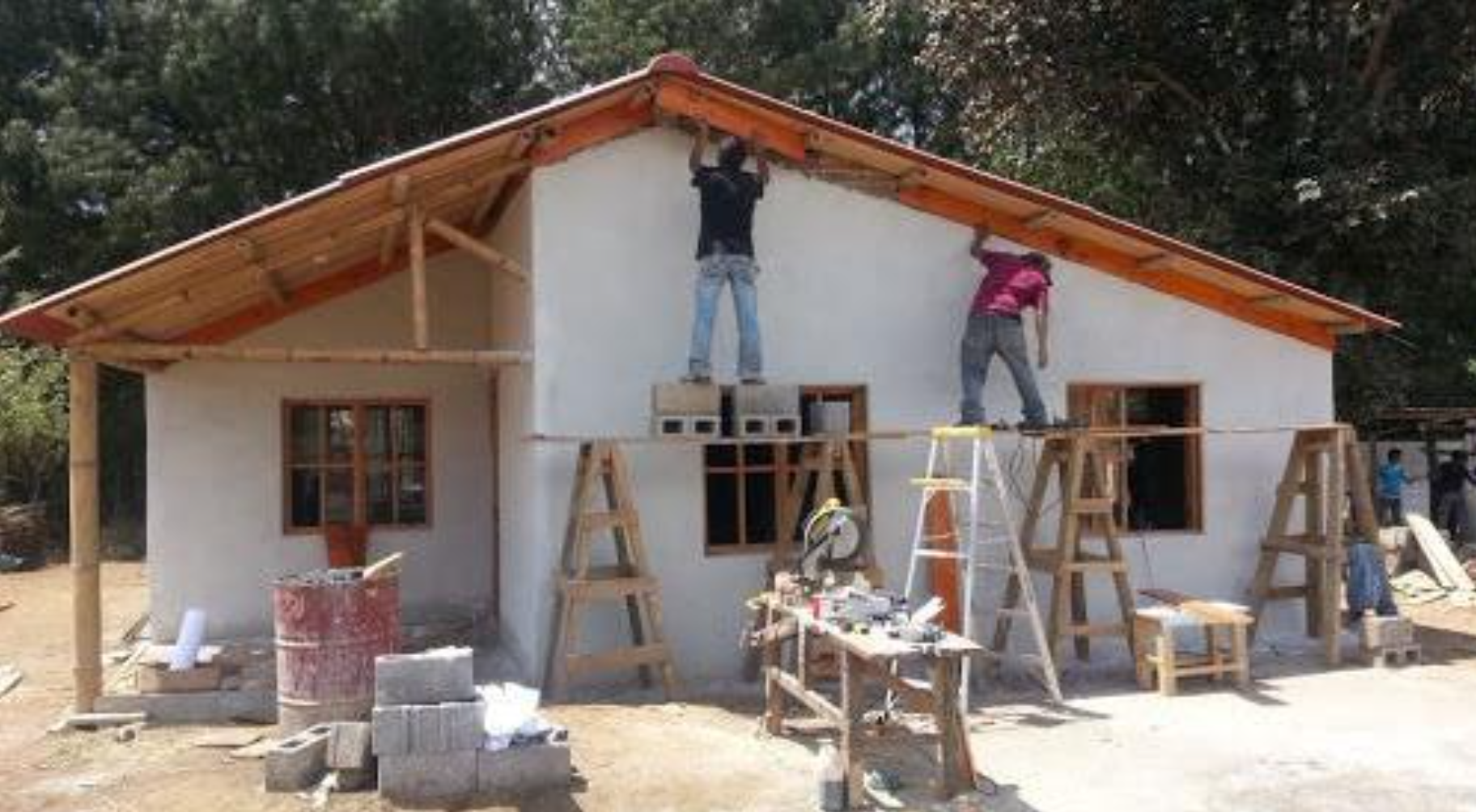
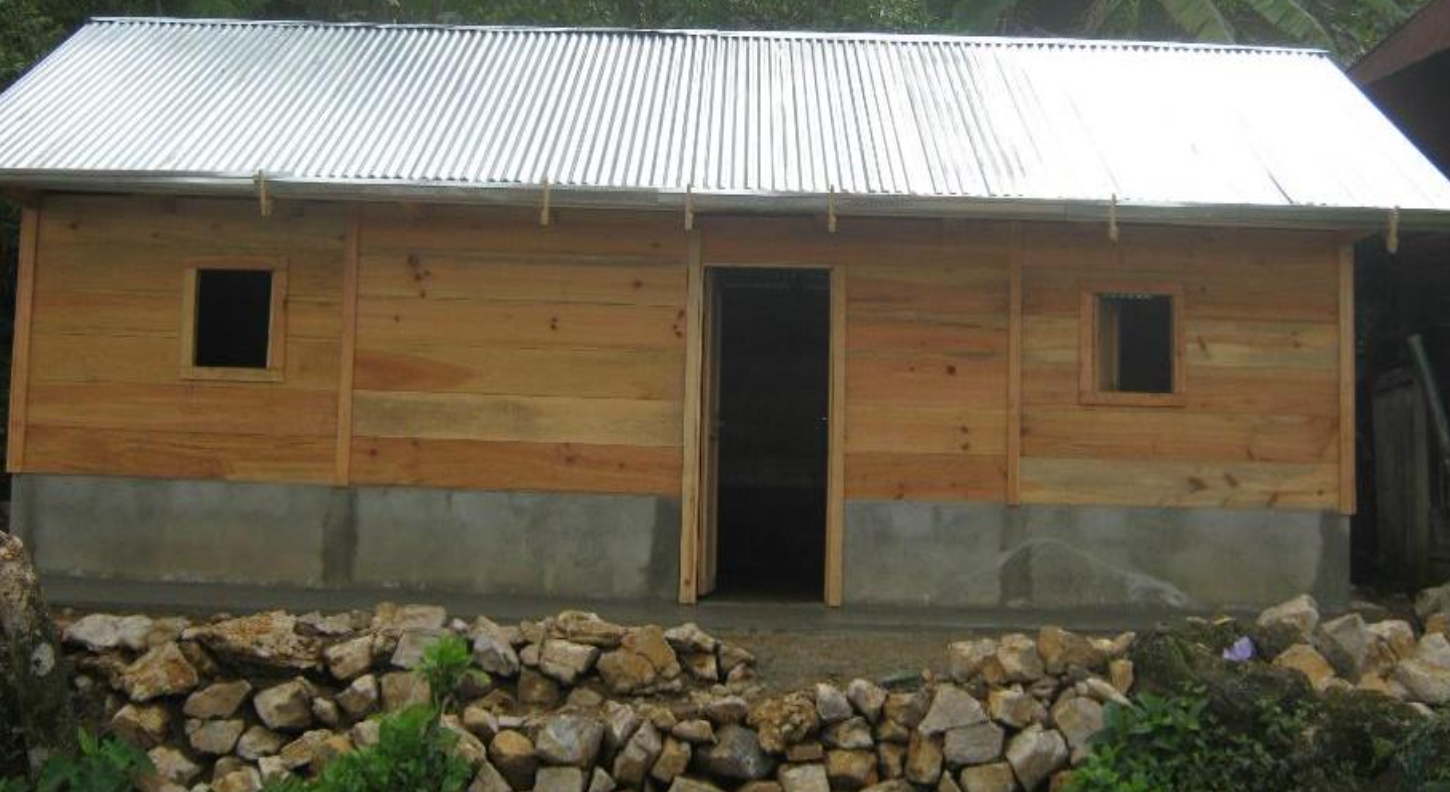

Step-by-step construction photos
The Justa cookstove reduces smoke inside the home to nearly zero, uses half as much wood as an open fire, and saves up to 15 tons of CO2 from entering the atmosphere over its lifespan, nearly the total yearly output of the average American.




